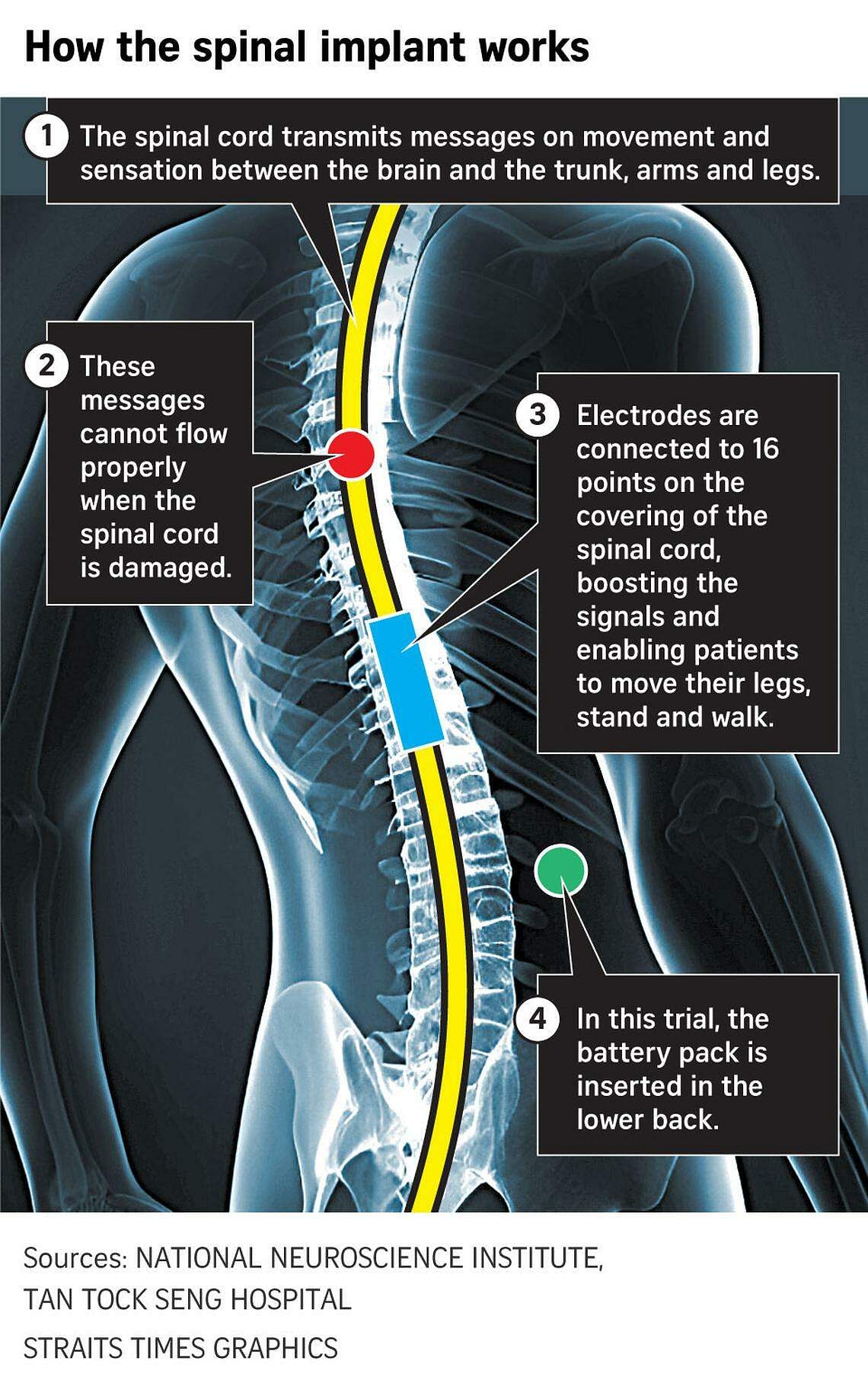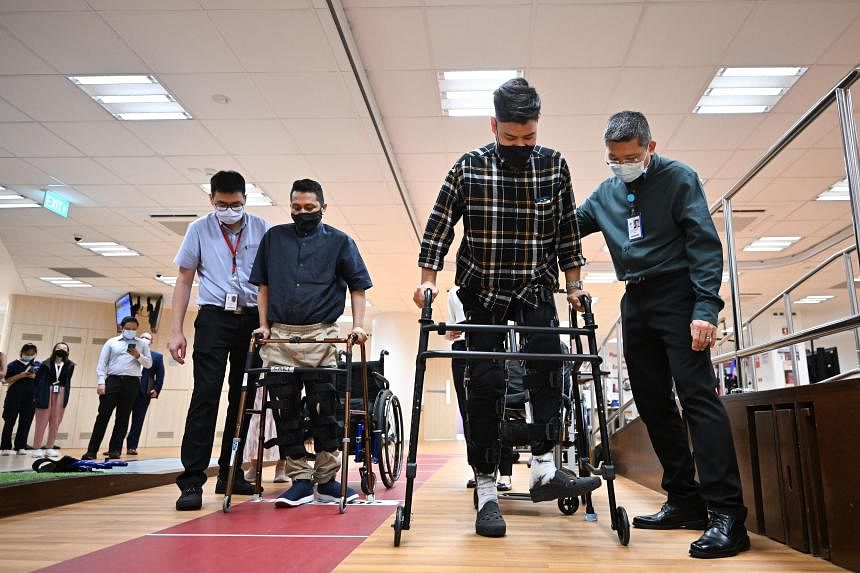SINGAPORE – Mr Sam Subian, 49, was a competitive jockey for 25 years until his horse Silver Spoon stumbled during training in June 2017, flinging him onto the track.
“Silver Spoon died and I fractured my spine. I could not sense anything below my chest. I was told I would never stand or walk again,” Mr Sam said.
It took him a few years to come to terms with not being able to walk, let alone compete, and he was worried about who would care for his mother.
But for the past seven months, Mr Sam has been able to walk unassisted, thanks to an implant that helps overcome the damage to the nerve pathways in his spinal cord – and lots of hard work.
He was the first of three participants in a new clinical trial here, called Restores (restoration of rehabilitative function with epidural spinal stimulation), which may spell hope for people who would otherwise never walk again.
Spinal cord damage disrupts the transmission of electric impulses or signals that control movement and sensation from the brain to parts of the body like the arms and legs, depending on where the damage is. These signals travel over nerve pathways.
The procedure involves implanting a spinal cord stimulator – an electrode powered by a battery pack inserted into the lower back and connected to the covering of the spinal cord below the damaged area.
“The aim of the trial is to bridge the damaged part of the spinal cord and boost signals from the brain to the muscles by tapping residual pathways that are still viable,” said neurosurgeon Wan Kai Rui from the National Neuroscience Institute (NNI).
The stronger signals can stimulate a person to walk again.
After the implant operation, participants undergo advanced robotic rehabilitation.
The researchers study how this helps improve nerve and muscle functions in patients paralysed from the chest down.
The procedure is the first of its kind in the region, and is being trialled by NNI, Tan Tock Seng Hospital (TTSH) and the Agency for Science, Technology and Research, with grants from the National Medical Research Council and the Ng Teng Fong Healthcare Innovation Programme.

The second participant is financial adviser Asyraf Ghazali, 28. He was in a road accident in 2018 that severed his spine and left him paralysed from the chest down.
“I was in the prime of my life when it happened. Like Sam, I made up my mind to move on with life, but I continuously looked for treatments to help me walk again,” he said.
He received his implant in March, a month after Mr Sam had his operation. The third, a woman, will get an electrode implanted in January 2024.
Dr Wan said TTSH and NNI in total treat about 100 new cases of spinal cord injury a year, and about 95 per cent of “motor complete” spinal cord injury patients – those with no sensation below the site of injury – have no neurological improvement five years after their injury.
A month after their surgery, both Mr Sam and Mr Asyraf were put through intense rehabilitation to get them to stand on their own and walk with a walking frame.
They were fitted into a robotic exoskeleton suit to simulate walking, increase the number of repeat steps taken and strengthen their trunk and leg muscles.
Senior principal physiotherapist at TTSH Wee Seng Kwee said motor imagery is also used.
“This is to have them imagine a movement, despite not being able to actively move. With mind over matter, the patients could eventually move parts of their legs that they could not before,” said consultant Valerie Ng.
But while they can move, they do not feel themselves moving.
“I was sceptical at first because prior to this, I suffered spasms. When the (medical) team told me that my toes were moving, I did not believe them and put it down to spasms until I started moving my knee,” Mr Asyraf said.
The men progressed quickly, moving from the use of the robotic exoskeleton to walking with a ceiling hoist in slightly over a month, and then to daily physiotherapy sessions overground in just seven months.
The results have surpassed what other similar programmes have achieved, said Dr Wan.
One programme in Texas, in the United States, carried out conventional rehabilitation twice a day for 1½ years to 2½ years “to achieve what we did in six months”, she said.
A programme in Minnesota entailed only spinal cord stimulation without any follow-up rehabilitation. “Its patients were able to move their toes and knees, but they were not standing or walking,” she said.
A recent one carried out in Switzerland had its own implants created, “which limits scalability and accessibility”, Dr Wan added.
At Restores, apart from using pre-existing implants that are easily available, the team also came up with a rehabilitation programme and programming recommendations that allow for efficient improvement.
The multi-disciplinary team hailed this as a major step to improving quality of life and will be moving into phase two of the trial with about 15 patients with spinal cord injury.
“We will also be looking at those with paralysis from the neck down. We want to see how such electrode stimulation can help with the movement in their arms,” Dr Wan said.
Mr Sam, a sports adviser at sports goods retailer Decathlon, is a fan of the 1970s American action television series The Six Million Dollar Man, about a former astronaut who was “rebuilt” with bionic implants after a test flight accident.
He said: “With the electrode and battery pack in me to help me walk, I feel like I’m a One Million Dollar Man.”


